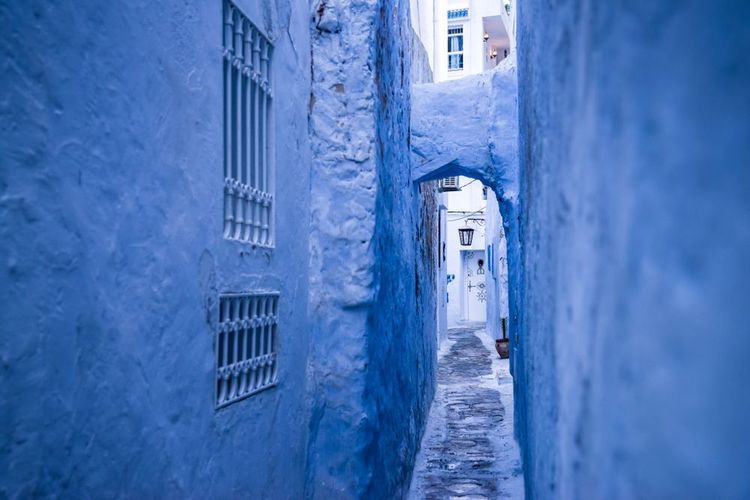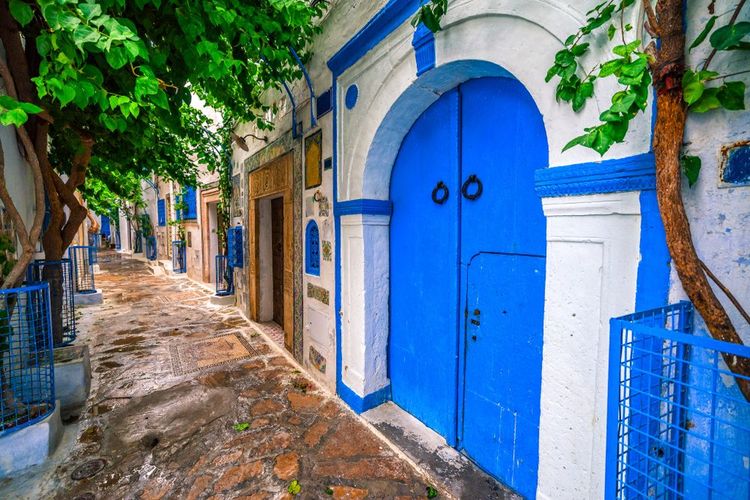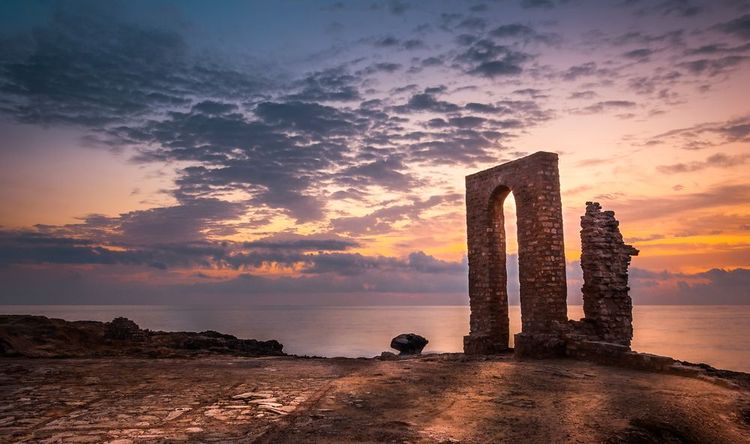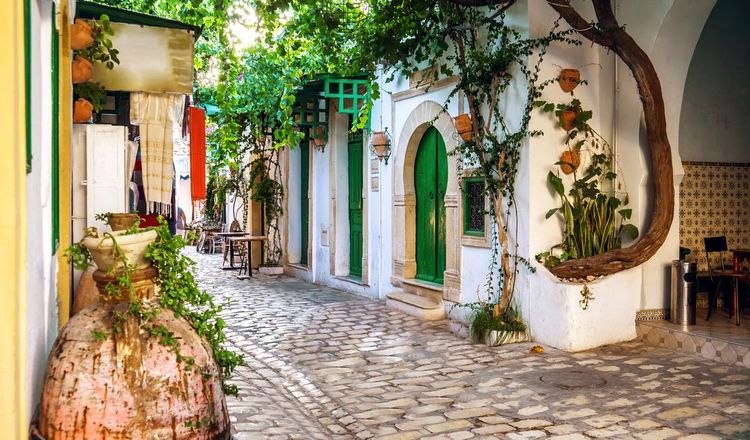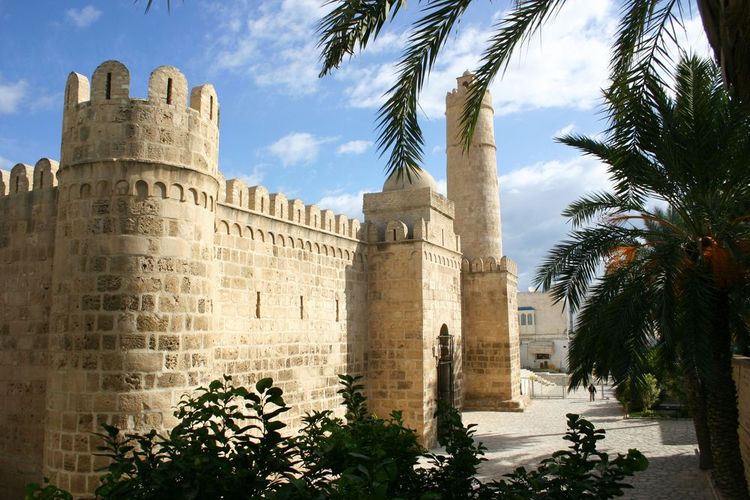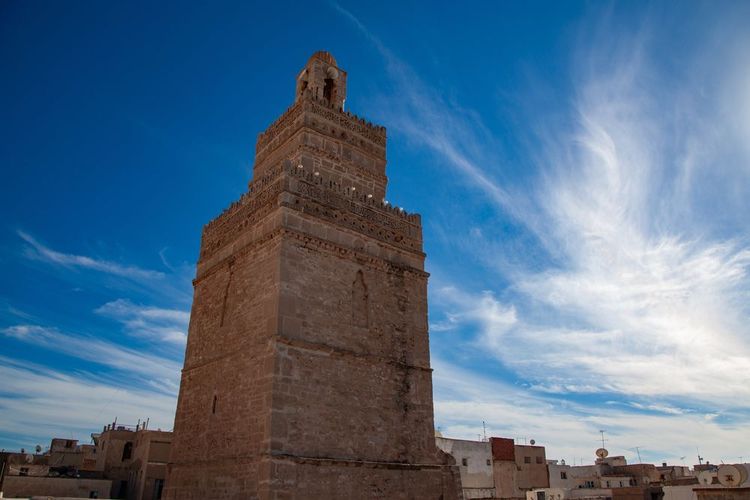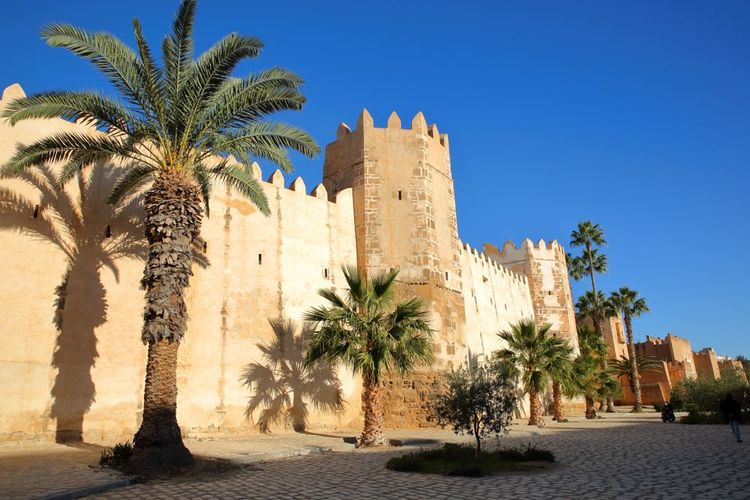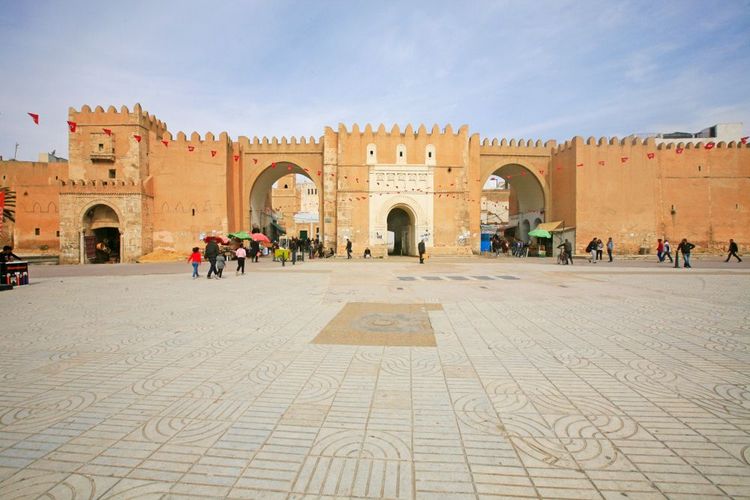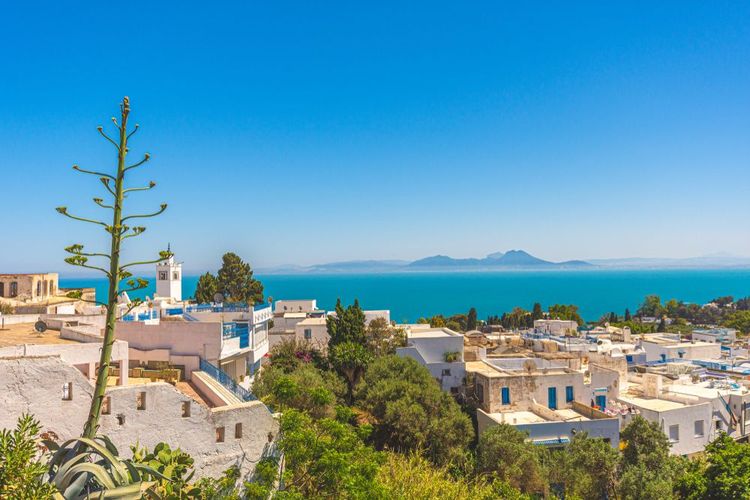The medina of Tunis has been a UNESCO World Heritage Site since 1979. It offers an extremely picturesque setting. You can lose yourself in its vaulted passageways and labyrinthine alleyways, while magnificent palaces and prestigious residences hide behind massive doors. Dar Lasram, a sumptuous building inaugurated in 1820, stands out for its rich stucco, ceramic and marble decoration, inspired by Andalusian, Ottoman and Italian styles. The emblematic Great Mosque of Zitouna (Olive Tree Mosque) is a must-see and serves as a landmark in this maze of narrow streets. There are many souks, grouped by theme: perfumers, jewellers, leather goods, medicinal plants, carpets, etc.
Tunisia is home to some sumptuous medinas, three of which are UNESCO World Heritage Sites: Tunis, Kairouan and Sousse. Many others are well worth a visit for their beauty, each with a unique characteristic. But the essentials are always there: walls, a fortress, a Great Mosque, a bazaar and souks! Dive into the medinas of Bizerte, Tunis, Nabeul, Hammamet, Sousse, Monastir, Mahdia, Kairouan and Sfax.
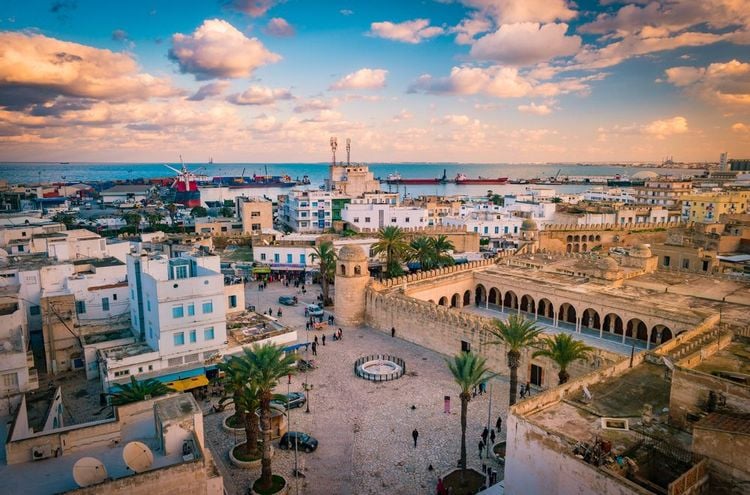
The UNESCO-listed medina of Sousse
- © Romas_Photo / Shutterstock- 1. The Tunis medina, the pride of the capital
- 2. The medina of Sousse, listed by UNESCO
- 3. Hammamet's medina, overlooking the sea
- 4. The medina of Nabeul, the historic cradle of pottery
- 5. The Monastir medina, like a film set
- 6. The medina of Mahdia, between two waters
- 7. The medina of Kairouan, one of the best preserved
- 8. The medina of Sfax, protected by the finest ramparts in the country
- Advice from the editor
1. The Tunis medina, the pride of the capital
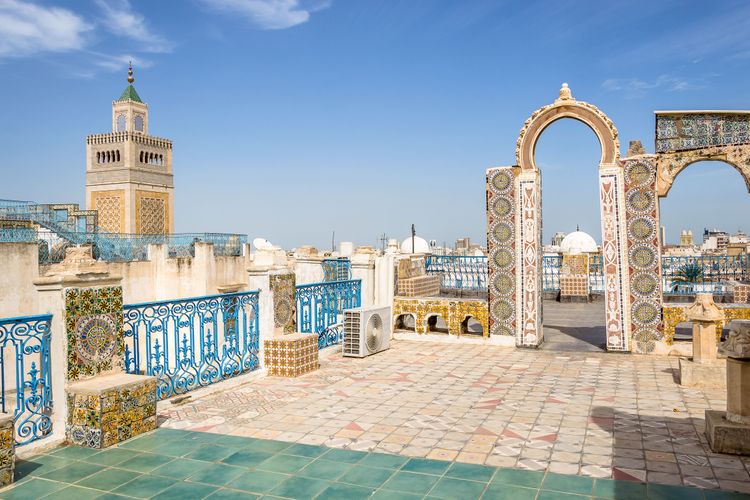
Medina of Tunis with view of the minaret of the Zaytuna mosque
- © Mltz / Shutterstock2. The medina of Sousse, listed by UNESCO
Sousse's must-see attraction is of course its medina, one of the most beautiful in the Arab world and a UNESCO World Heritage Site. The main street leads up to the Great Mosque, built in the 9th century on the foundations of an ancient fort. To the west, the oldest Ribat in Tunisia takes the form of an impressive fortress, which served as a model for that of Monastir. Ribat was the name given, in the early Muslim era, to these fortresses that watched for enemy attacks from a high watchtower. Don't hesitate to climb to the top of the 35-metre-high cylindrical watchtower to admire the panorama!

The Ribat of Sousse
- © Pier Giorgio Carloni / Shutterstock3. Hammamet's medina, overlooking the sea
Hammamet is more than just Tunisia's best-known seaside resort: it's also an old medina with superb blue and yellow Arabic doors housing the splendid Great Mosque! It's small (200 metres by 200 metres), so you won't get too lost... The whole offers a lovely contrast between the white dome and the ramparts, the beach and its colourful fishermen's boats at the foot of the fort (or kasbah).
4. The medina of Nabeul, the historic cradle of pottery
Less well-known than its neighbour Hammamet, 10km further south-west, the medina of Nabeul is less touristy and more authentic! It is also better preserved and larger. The best thing to do is to lose yourself in the narrow streets, haggle in the souk shops, have a mint tea for a ridiculously low price on a terrace with the locals, visit a barber or go through the door of the mosque and admire the impressive minaret. Last but not least, it's unthinkable not to take home a ceramic from Tunisia's pottery capital!
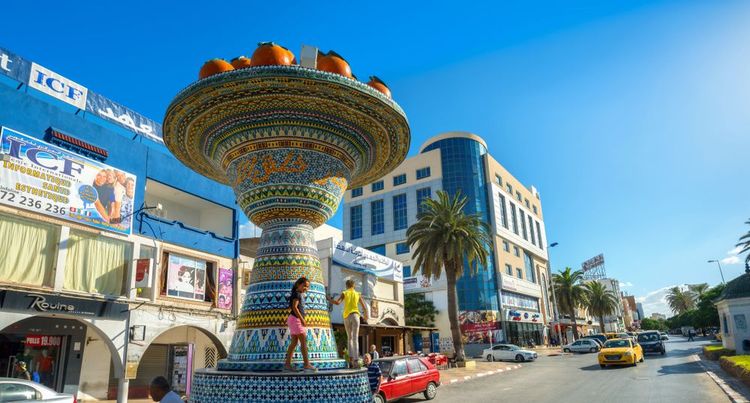
Rue de Nabeul with a ceramic sculpture
- © Valery Bareta / Shutterstock5. The Monastir medina, like a film set
✈️ Flights to Monastir
Easy access to Monastir from FranceMonastir's medina is full of surprises as you stroll along its cobbled streets, lined with shops. The star attraction is the Ribat, one of Tunisia's most imposing monuments. Founded in 796, this fortress overlooking the Mediterranean is surrounded by several levels of ramparts. An impressive fortified citadel offering a setting worthy of Game of Thrones! From the top of the nador, the monks' watchtower, you can enjoy a superb view of the sea. A panorama that has to be earned after climbing a hundred or so spiral steps...
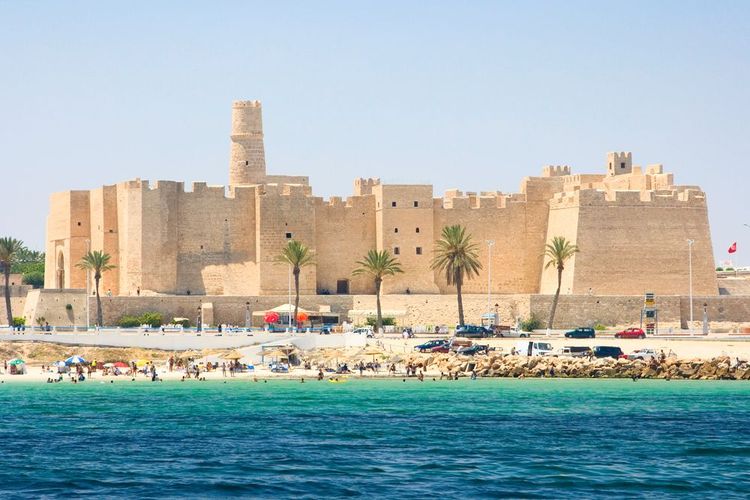
The Ribat of Monastir
- © Alexey Goosev / Shutterstock6. The medina of Mahdia, between two waters
Situated on a rocky peninsula at the tip of Cap Afrique, Mahdia 's medina has a charm all of its own! It's not crowded. It's still relatively small, with shady squares where you can enjoy a glass of freshly squeezed orange juice. Along the way, you can admire colourful frescoes, art galleries, the public hammam and even an old church hosting a painting exhibition. Finally, you can admire the panoramic view from the roof of dar el medina, a huge Moorish café spanning several floors! You enter the old town through the Skifa El Kahla or Bab Zouila. This superb fortified gateway dates from the 10th century and is one of the few remaining vestiges of the ancient ramparts. From here, a covered souk displays traditional wedding costumes.
7. The medina of Kairouan, one of the best preserved
The medina and city of Kairouan are UNESCO World Heritage Sites. Wandering through its narrow streets, you'll stumble across its treasures, including the Great Mosque, one of the oldest and most beautiful in the world. The medina reveals itself as it was in the past, along vaulted passageways housing porches, courtyards and the mysterious silhouettes of veiled women. Don't miss the small Mosque of the Three Doors, which boasts the oldest sculpted and decorated mosque façade in the Islamic world. Another curiosity is the mysterious Bir Barrouta well, which dates back to the 8th century, when the city was founded. It is said to be linked by underground rivers to the sacred well in Mecca. A dromedary draws the sacred water by driving a noria. Glasses are available if you'd like to try the experience!
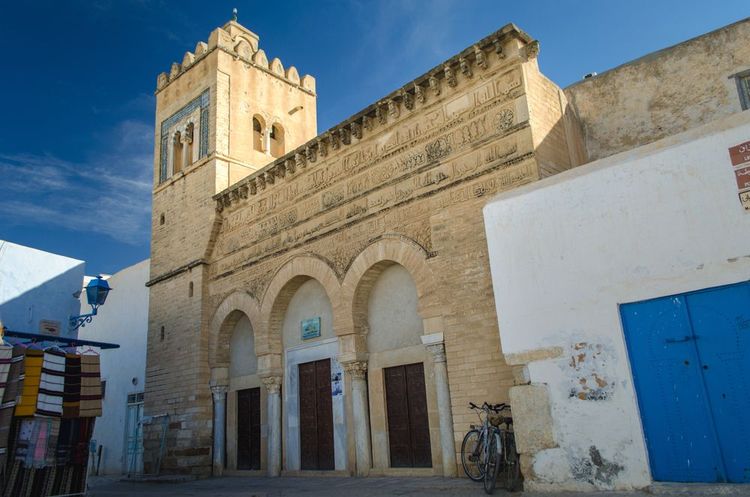
The Three Gates Mosque, the oldest carved and decorated mosque façade in the Islamic world
- © Michal Hlavica / Shutterstock8. The medina of Sfax, protected by the finest ramparts in the country
Sfax's main jewel is its medina, encircled by ramparts considered to be among the finest in the country. The Tunisian government would like to have them listed by UNESCO, which considers the medina of Sfax to be "the most representative and best-preserved example of arbo-Islamic town planning in the entire Mediterranean basin". It is on the waiting list... Access is via monumental gates leading to an impressive variety of souks with an authentic atmosphere and bustling population. The highlight of a visit to the medina is the Great Mosque, which in some respects is reminiscent of the one in Kairouan. In the south-west corner of the medina, head for the Kasbah, a former fortified residence dating from the 16th century, with its striking towers and artillery bastion.
Advice from the editor
🧭 It's easy to get lost in a medina. The best thing to do is try to find a landmark. This is usually the minaret of the Great Mosque!
🥾 The medina is a car-free pedestrian zone, which is pretty green! So grab some good walking shoes and a map, and let's get lost in the maze of narrow streets! Yes, getting lost in a medina is part of the game!
🛍️ The medina is inextricably linked with the souks and other bazaars: be prepared for some hard bargaining, once you've made sure you're no longer wearing your club's all-inclusive bracelet... The ideal time to explore the souks is early in the morning, before the hordes of tourists arrive, when the locals come to stock up on fresh fruit, vegetables and fish.
